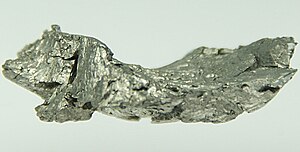Template:Infobox gadolinium
Jump to navigation
Jump to search
[[Category:Template:Pagetype with short description]]
 | |||||||||||||||||||||||||||||||||||||||||||||||||||
| Gadolinium | |||||||||||||||||||||||||||||||||||||||||||||||||||
|---|---|---|---|---|---|---|---|---|---|---|---|---|---|---|---|---|---|---|---|---|---|---|---|---|---|---|---|---|---|---|---|---|---|---|---|---|---|---|---|---|---|---|---|---|---|---|---|---|---|---|---|
| Pronunciation | /ˌɡædəˈlɪniəm/ | ||||||||||||||||||||||||||||||||||||||||||||||||||
| Appearance | silvery white | ||||||||||||||||||||||||||||||||||||||||||||||||||
| Standard atomic weight Ar, std(Gd) | Template:Val[1] | ||||||||||||||||||||||||||||||||||||||||||||||||||
| Gadolinium in the periodic table | |||||||||||||||||||||||||||||||||||||||||||||||||||
| |||||||||||||||||||||||||||||||||||||||||||||||||||
| Atomic number (Z) | 64 | ||||||||||||||||||||||||||||||||||||||||||||||||||
| Group | n/a | ||||||||||||||||||||||||||||||||||||||||||||||||||
| Period | period 6 | ||||||||||||||||||||||||||||||||||||||||||||||||||
| Block | f-block | ||||||||||||||||||||||||||||||||||||||||||||||||||
| Electron configuration | [Xe] 4f7 5d1 6s2 | ||||||||||||||||||||||||||||||||||||||||||||||||||
| Electrons per shell | 2, 8, 18, 25, 9, 2 | ||||||||||||||||||||||||||||||||||||||||||||||||||
| Physical properties | |||||||||||||||||||||||||||||||||||||||||||||||||||
| Phase at STP | solid | ||||||||||||||||||||||||||||||||||||||||||||||||||
| Melting point | 1585 K (1312 °C, 2394 °F) | ||||||||||||||||||||||||||||||||||||||||||||||||||
| Boiling point | 3273 K (3000 °C, 5432 °F) | ||||||||||||||||||||||||||||||||||||||||||||||||||
| Density (near r.t.) | 7.90 g/cm3 | ||||||||||||||||||||||||||||||||||||||||||||||||||
| when liquid (at m.p.) | 7.4 g/cm3 | ||||||||||||||||||||||||||||||||||||||||||||||||||
| Heat of fusion | 10.05 kJ/mol | ||||||||||||||||||||||||||||||||||||||||||||||||||
| Heat of vaporization | 301.3 kJ/mol | ||||||||||||||||||||||||||||||||||||||||||||||||||
| Molar heat capacity | 37.03 J/(mol·K) | ||||||||||||||||||||||||||||||||||||||||||||||||||
Vapor pressure (calculated)
| |||||||||||||||||||||||||||||||||||||||||||||||||||
| Atomic properties | |||||||||||||||||||||||||||||||||||||||||||||||||||
| Oxidation states | 0,[2] +1, +2, +3 (a mildly basic oxide) | ||||||||||||||||||||||||||||||||||||||||||||||||||
| Electronegativity | Pauling scale: 1.20 | ||||||||||||||||||||||||||||||||||||||||||||||||||
| Ionization energies |
| ||||||||||||||||||||||||||||||||||||||||||||||||||
| Atomic radius | empirical: 180 pm | ||||||||||||||||||||||||||||||||||||||||||||||||||
| Covalent radius | 196±6 pm | ||||||||||||||||||||||||||||||||||||||||||||||||||
| Spectral lines of gadolinium | |||||||||||||||||||||||||||||||||||||||||||||||||||
| Other properties | |||||||||||||||||||||||||||||||||||||||||||||||||||
| Natural occurrence | primordial | ||||||||||||||||||||||||||||||||||||||||||||||||||
| Crystal structure | hexagonal close-packed (hcp) | ||||||||||||||||||||||||||||||||||||||||||||||||||
| Speed of sound thin rod | 2680 m/s (at 20 °C) | ||||||||||||||||||||||||||||||||||||||||||||||||||
| Thermal expansion | α poly: 9.4 µm/(m·K) (at 100 °C) | ||||||||||||||||||||||||||||||||||||||||||||||||||
| Thermal conductivity | 10.6 W/(m·K) | ||||||||||||||||||||||||||||||||||||||||||||||||||
| Electrical resistivity | α, poly: 1.310 µΩ·m | ||||||||||||||||||||||||||||||||||||||||||||||||||
| Magnetic ordering | ferromagnetic–paramagnetic transition at 293.4 K | ||||||||||||||||||||||||||||||||||||||||||||||||||
| Magnetic susceptibility | +755,000.0·10−6 cm3/mol (300.6 K)[3] | ||||||||||||||||||||||||||||||||||||||||||||||||||
| Young's modulus | α form: 54.8 GPa | ||||||||||||||||||||||||||||||||||||||||||||||||||
| Shear modulus | α form: 21.8 GPa | ||||||||||||||||||||||||||||||||||||||||||||||||||
| Bulk modulus | α form: 37.9 GPa | ||||||||||||||||||||||||||||||||||||||||||||||||||
| Poisson ratio | α form: 0.259 | ||||||||||||||||||||||||||||||||||||||||||||||||||
| Vickers hardness | 510–950 MPa | ||||||||||||||||||||||||||||||||||||||||||||||||||
| CAS Number | 7440-54-2 | ||||||||||||||||||||||||||||||||||||||||||||||||||
| History | |||||||||||||||||||||||||||||||||||||||||||||||||||
| Naming | after the mineral Gadolinite (itself named after Johan Gadolin) | ||||||||||||||||||||||||||||||||||||||||||||||||||
| Discovery | Jean Charles Galissard de Marignac (1880) | ||||||||||||||||||||||||||||||||||||||||||||||||||
| First isolation | Lecoq de Boisbaudran (1886) | ||||||||||||||||||||||||||||||||||||||||||||||||||
| Main isotopes of gadolinium | |||||||||||||||||||||||||||||||||||||||||||||||||||
| |||||||||||||||||||||||||||||||||||||||||||||||||||
[[Category:Infobox templates|Template:Remove first word]]
| data m.p. cat | |||||
|---|---|---|---|---|---|
| in | calc from C | diff | report | ref | |
| C | 1312 | — | — | ||
| K | 1585 | 1585 | 0 | ||
| F | 2394 | 2394 | 0 | Template:Subpage other | |
| max precision | 0 | ||||
| WD | Template:Wikidata Script error: No such module "EditAtWikidata". | Template:Wikidata | |||
| input | C: 1312, K: 1585, F: 2394 | ||||
| comment | |||||
| data b.p. cat | |||||
|---|---|---|---|---|---|
| in | calc from C | diff | report | ref | |
| C | 3000 | — | — | ||
| K | 3273 | 3270 | 3 | delta | |
| F | 5432 | 5430 | 2 | delta | Template:Subpage other |
| max precision | 0 | ||||
| WD | Template:Wikidata Script error: No such module "EditAtWikidata". | Template:Wikidata | |||
| input | C: 3000, K: 3273, F: 5432 | ||||
| comment | |||||
| Eu ← |
→ Tb | |
| ||
| Data sets read by {{Infobox element}} | |
|---|---|
| Name and identifiers | |
| Top image (caption, alt) | |
| Pronunciation | |
| Category (enwiki) | |
| Standard atomic weight | |
| most stable isotope | |
| Natural occurrence | |
| Phase at STP | |
| Oxidation states | |
| Spectral lines image | |
| Electron configuration (cmt, ref) | |
| Term symbol * (cmt, ref) | |
| Wikidata * | |
| * Not used in {{Infobox element}} (2019-02-03) See also {{Infobox element/symbol-to--navbox}} | |
References
- ↑ Meija, Juris; et al. (2016). "Atomic weights of the elements 2013 (IUPAC Technical Report)". Pure and Applied Chemistry. 88 (3): 265–91. doi:10.1515/pac-2015-0305.
- ↑ Yttrium and all lanthanides except Ce and Pm have been observed in the oxidation state 0 in bis(1,3,5-tri-t-butylbenzene) complexes, see Cloke, F. Geoffrey N. (1993). "Zero Oxidation State Compounds of Scandium, Yttrium, and the Lanthanides". Chem. Soc. Rev. 22: 17–24. doi:10.1039/CS9932200017. and Arnold, Polly L.; Petrukhina, Marina A.; Bochenkov, Vladimir E.; Shabatina, Tatyana I.; Zagorskii, Vyacheslav V.; Cloke (2003-12-15). "Arene complexation of Sm, Eu, Tm and Yb atoms: a variable temperature spectroscopic investigation". Journal of Organometallic Chemistry. 688 (1–2): 49–55. doi:10.1016/j.jorganchem.2003.08.028.
- ↑ Weast, Robert (1984). CRC, Handbook of Chemistry and Physics. Boca Raton, Florida: Chemical Rubber Company Publishing. pp. E110. ISBN 0-8493-0464-4.
Lua error: Internal error: The interpreter has terminated with signal "24".

